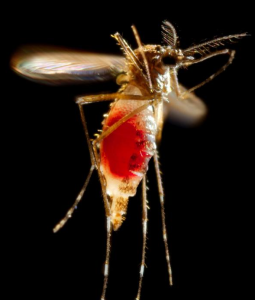By NewsDesk @infectiousdiseasenews
The Sri Lanka National Dengue Control Unit (NDCU) reports the rise in the number of dengue patients in the country, especially during the past two months of 2019 is due mainly to the previously latent serotype 3 (DENV3) becoming active and to the changing weather patterns bringing intermittent rain from August.

Dengue fever (DF) and the more severe Dengue Hemorrhagic fever (DHF), is caused by one or more of the four serotypes of dengue viruses (DENV1, DENV2, DENV3 & DENV4) which had been co-circulating within the country, since the early 1990s. However, from time to time a previously latent serotype becomes dominant, driving the disease to epidemic proportions as in the year 2017, which recorded the highest dengue incidence so far, with 186,101 cases reported throughout the island. It was caused by serotype2 (DENV2).
According to the Epidemiology Unit’s latest update, 104,501 cases were reported during the period January 1 to December 31, 2019, double the 51,659 cases reported during the corresponding period of the previous year. “In Sri Lanka we have begun to see a pattern of the numbers rising and falling during alternate years. However, the main concern is the growing numbers over the years,” he said. Dengue patients are not only being reported from all districts of the country, the number of dengue incidences had been showing an upward trend during the last 10 years.
Subscribe to Outbreak News TV on YouTube
To date in 2020, Sri Lanka has reported nearly 2,300 dengue cases through the first 20 days of the year, with more than 20 percent of cases reported in Colombo.
- China: Two coronavirus cases confirmed in Beijing
- South Korea reports imported novel coronavirus case
- Japan reports congenital rubella syndrome case in Fukushima Prefecture
- Wuhan novel coronavirus outbreak update: January 19, 2020
- Yellow fever alert issued in southern and southeastern Brazil
- Vermont is the latest state to declare a hepatitis A outbreak
- Researchers develop the first mosquitoes synthetically designed to neutralize dengue

